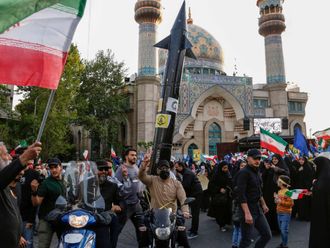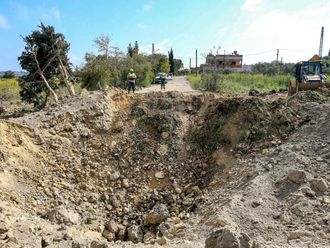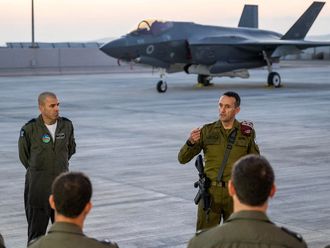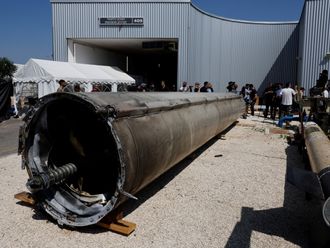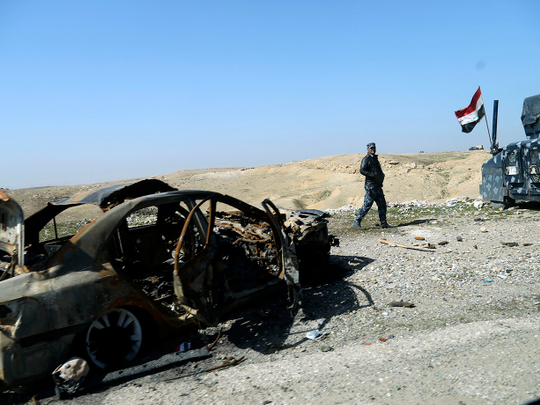
Washington: Daesh extremists are forcing children and disabled people into explosives-laden trucks and making them drive at Iraqi security forces in Mosul, a general from the US-led coalition has said.
The barbaric tactic, coupled with other increasingly desperate battlefield measures, is a sign the Daesh group knows defeat is inevitable, officials say.
Iraqi forces seized most of Mosul's airport Thursday, an important milestone in the broader offensive to retake the western half of the country's second-largest city from the Daesh, Iraqi and allied officials said.
The push to take the airport, which has been led by Iraqi federal police, is a promising start to what is expected to be a difficult and bloody fight to completely evict Daesh from the city.
"They are most of the way through the airfield," Brig. Gen. Matthew C. Isler, a senior US Air Force officer in the US-led headquarters in Baghdad, said late Thursday afternoon.
It took Iraqi forces 100 days to seize the eastern half of the city, an operation that led to significant Iraqi casualties.
Gen. Joseph L. Votel, the head of the US Central Command who arrived in Baghdad on Thursday, said about 500 Iraqi military personnel had been killed and about 3,000 had been wounded in that operation.
The extremists have used exploding trucks, known in military circles as VBIEDs — vehicle-borne improvised explosive devices — and pronounced “Vee-Bids,” to devastating effect in numerous engagements during the Mosul offensive and elsewhere in Iraq.
Coercive techniques
Speaking to reporters in Baghdad this week, General Isler said the Daesh group had adopted coercive new techniques in its use of suicide car bombs because the extremists appear to be running out of willing drivers.
“We saw people being led to a VBIED, being put in (it) and being chained in the VBIED,” he said.
“We’ve seen children put in VBIEDs as drivers, people that aren’t able to walk... I don’t know if they signed up for this service.”
The coalition has often seen VBIEDs depart on missions, only for their drivers to veer off course and attempt to hide behind structures.
“We see a VBIED going to its attack, going off and hiding,” Isler said.
“We see a party going to find the AWOL VBIED driver, we see (Daesh) command and control trying to figure out where their VBIED driver’s gone, we’ve seen multiple VBIED drivers going AWOL.”
The coalition first saw drivers being chained into trucks when Iraqi security forces approached the Tigris river as they cleared eastern Mosul, Isler said.
Drones
The operation to free Iraq’s second city of Daesh control began in October. After clearing the east side, Iraqi forces on Sunday launched an operation aimed at flushing the extremists from Mosul’s west bank.
On Thursday, they thrust into Mosul airport on the southern edge of the Daesh stronghold for the first time since the extremists overran the region in 2014.
Iraqi troops backed by jets, helicopter gunships and drones blitzed their way across open areas south of Mosul before entering the airport compound. Although they apparently met limited resistance, they strafed the area for suspected snipers.
As its fighters are killed off and it loses ground, the Daesh group has developed new ways to counter-strike, including by steering hobby drones fitted with grenades and bombs at troops and civilians.
The buzz of the small, pilotless aircraft now puts soldiers on guard, but their impact has been limited.
“It has a harassing effect, but it’s not a game changer,” New Zealand Brigadier Hugh McAslan said.
The coalition officers said the most the Daesh group can hope to do now is fight “delaying actions” ahead of losing Mosul.
“Defeat’s inevitable,” McAslan said. “It’s just when.”


